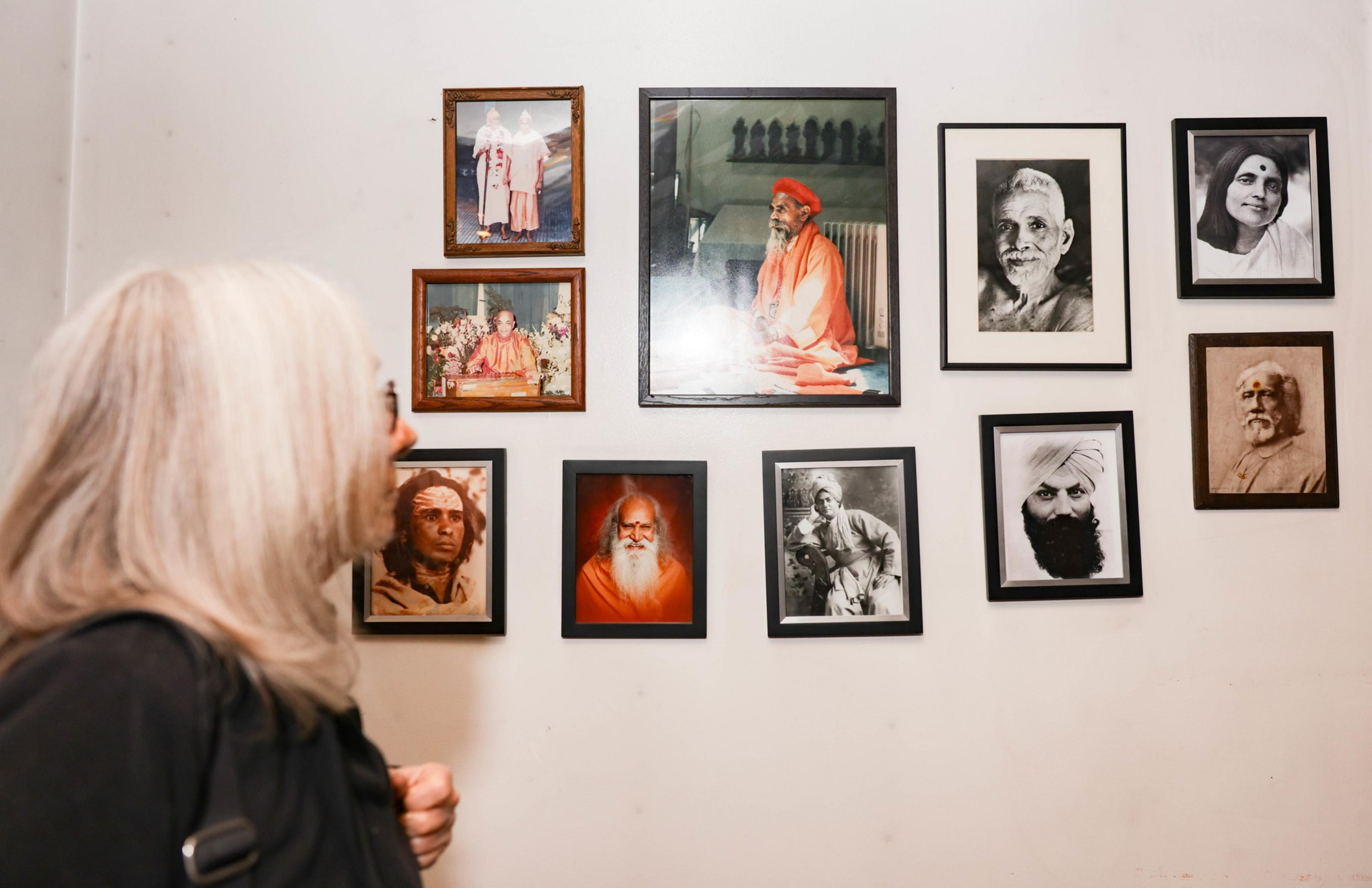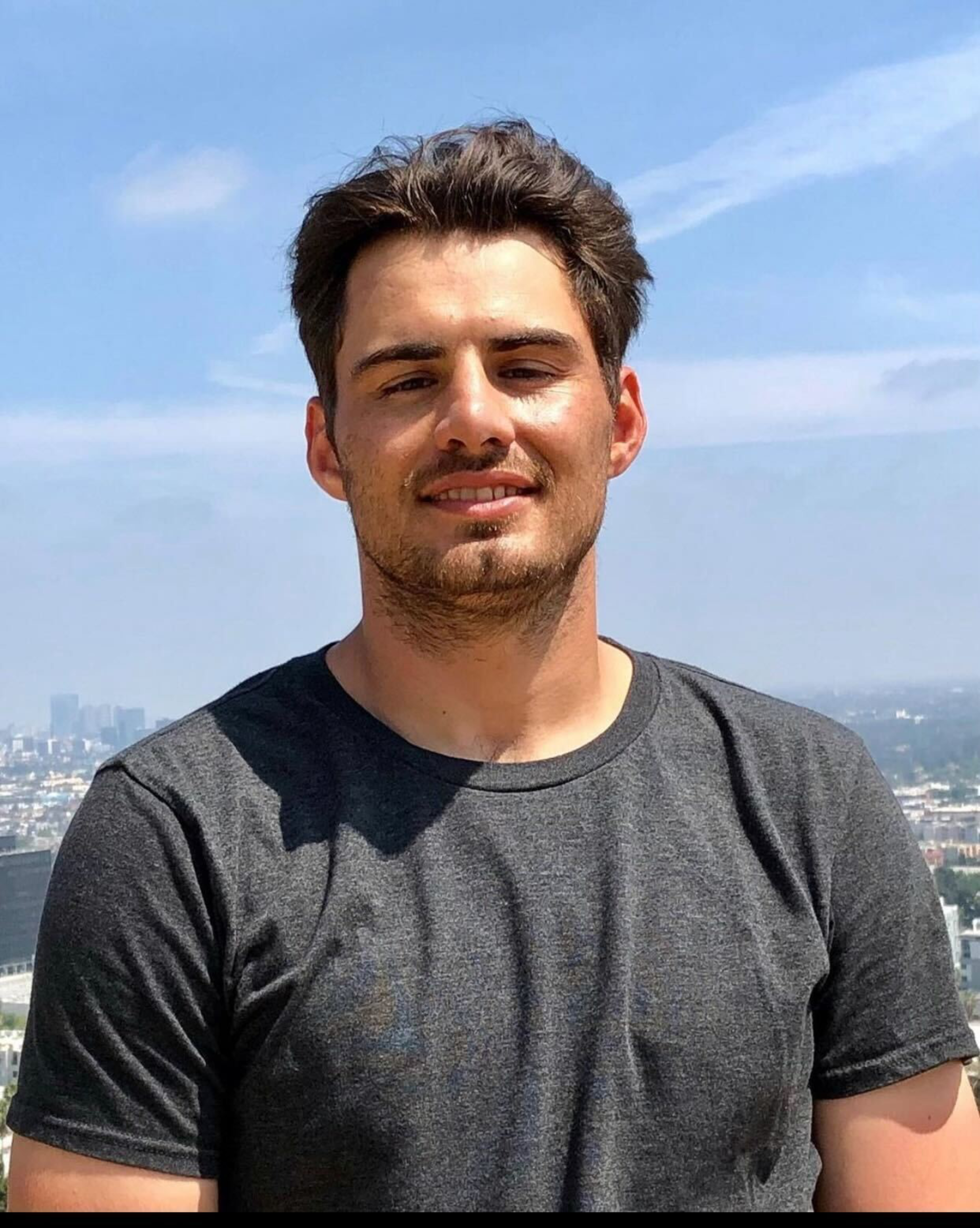Among the stately Victorians and Chinese elms lining Folsom Street in San Francisco’s Mission District, there’s one house that stands out—but only if you know what to look for.
With a sign in Sanskrit out front and bright orange curtains visible on the second floor, the legacy of a renowned guru animates 2872 Folsom, one of a few remaining ashrams (or places for religious retreat) in a city that has embraced Hindu spirituality for more than half a century.
Part of what makes the Yoga Society of San Francisco (opens in new tab) so unusual is that it’s a deeply spiritual refuge in the middle of a bustling neighborhood better known for dive bars and taquerias.

When Mahendra Agarwal first came to the ashram in 1998 in search of a place to meditate, he stepped inside the Cosmic Templum—the meditation room where Vedic fire ceremonies happen daily—on the ground level of the expansive property. He was blown away.
“It was magical,” he said. “It’s in the heart of the city—and yet I feel like I am in India.”
The Yoga Society of San Francisco first set up shop in a rented two-story building in Potrero Hill in 1972 as a center for yoga, meditation and Sanskrit study. Quickly outgrowing the space, ashram member Alan Klonsky employed the services of Herth Realty in the Castro to locate the group’s forever home—a Queen Anne Victorian on a double lot with a carriage house, 12-foot ceilings, stained glass and pocket doors made of redwood.
The Yoga Society bought the circa-1900 home for $40,000 in 1973. Shabby yet spacious, dark yet grand, it was exactly what the group was looking for—and now the organization is celebrating 50 years in the space.
“It filled in all the blanks,” Klonsky wrote. “Answered positively all the questions.”

The Cosmic Templum
The heart of the Yoga Society of San Francisco is its meditation temple, and the heart of the meditation temple is the fire pit. In a Hindu ritual that’s more than 4,000 years old, cow dung is set on fire and ghee is poured onto the flames as Sanskrit chanting ripples through the air. Fire can illuminate—and it can also destroy.
The temple is decorated with a mosaic floor featuring the 12 astrological signs and covered by a roof containing 12 spokes echoing the zodiac theme. The ceiling is painted with multi-colored swirls, shapes that are a cross between flames and the lotus flower.
An altar on one side of the temple has images of ashram founder Shri Brahmananda Sarasvati—and also Hindu deities, Jesus, Buddha and the Virgin of Guadalupe. Attendees remove their shoes to enter the room, where they sit on cushions for the Vedic fire ceremony, which includes 10 minutes of chanting and 20 minutes of silent meditation. At the end, the fire leader doles out prasad—an offering of seeds and dried fruit—from a large glass jar with a metal spoon.
Before the building of the meditation room, Shanta Bulkin was sitting at one of the ashram’s programs in the 1970s when Sarasvati—the guru of the Yoga Society of San Francisco—came up to the young disciple with an odd declaration. Sarasvati told the 23-year-old, who had no construction experience, that he would build the ashram’s temple.
“I thought he was talking to someone behind me,” Bulkin said.

The arrangement appeared even stranger since a top-caliber professional architect, John Hornyak, was already on the job. Hornyak had designed 4 Embarcadero Center with the John Portman Company. Even though Hornyak was upset about the new arrangement—he wanted a break from corporate buildings—he took Bulkin under his wing. The experienced builder met with the young spiritual seeker once a week at Hornyak’s tall office tower to teach him about construction.
Hornyak, in his early 50s, wore a suit and tie every day and was immaculately coiffed. Bulkin was a suicidal 23-year-old with long wiry hair, dressed in what appeared to be pajamas.
“The contrast between us was striking,” Bulkin said.
Despite his total lack of experience, Bulkin fell in love with the trade—Sarasvati had ended up directing him onto his life’s path. Within 30 years, Bulkin had 30 full-time employees as the head of his own construction company, Shanta Design | Build.
“He knew you as soon as he saw you,” Bulkin said of Sarasvati. “He knew you before he saw you.”

The spiritual leader could also be demanding. When the residents of the ashram painstakingly painted the flame-lotus designs on the boards for the Cosmic Templum’s ceiling, the guru made them take them down when he saw they hadn’t included the black stripe he wanted in the multi-colored design.
“He was very particular about what he wanted,” Bulkin said. “And he thought we should not be afraid of darkness.”
Challenges and Miracles
Mahendra Agarwal returned to the ashram in 2012 after a 14-year gap, newly divorced and broken-hearted. The Yoga Society welcomed him with open arms, and he knew he had come back to his spiritual home. He teaches breathwork and raw food workshops at the ashram as part of the ongoing schedule of meditation and yoga classes, all of which are open to the public and many of which are donation-based and available online.

Agarwal, who is more commonly known by his nickname Briksha, also serves as the residential manager of the ashram. He loves the position because he gets to live above the temple and meet people from all walks of life. Seven residents live at the ashram, representing a range of backgrounds, from the well-off to the struggling, from Gen Z to Baby Boomer.
One of those seven people is Vishnu Das. He has a long white beard, warm eyes and lots to say about yoga philosophy—including how early gurus were breaking ranks by sharing the secretive, quasi-magical powers of yoga and meditation with the masses.
For decades, Das has come to the ashram for periodic stays from the Sierras, and he’s eager to talk about human suffering, modern pscyhology and the path to enlightenment.

“Vedanta melts everything,” he said, speaking of the lineage represented at the ashram. “It’s beyond all knowledge.”
Down the hall from Das is a young Facebook employee who has been living at the ashram for nearly three months. Abhishek Pandit appreciates the serenity of the environment and said it’s particularly conducive to creative endeavors, like the musical he’s writing about the connection between technology and climate change.
“It’s a great contrast to my work at Facebook,” he said. “But you still get to live in a city.”
Yet alongside the joys are the challenges of communal living.

“They haven’t even graduated from the primary school of life,” Agarwal said of some of the ashram’s residents, noting that he often has to teach people how to wash dishes.
Another struggle is the economic situation. The all-volunteer board directing the ashram operates on a shoestring budget. Taking in some meager funds from donations and the residents who pay only $1,000 a month to live there—which includes room, board and all programs—the ashram has to fundraise to cover major expenses, like painting the large expanse of the house.
“It’s a miracle,” said Kiranavali Devi, president of the board of directors of the Yoga Society of San Francisco, when asked how they are able to keep the bills paid at such a palatial property.
Part of what has kept the ashram alive over all those years—and perhaps contributed to the wonder of sustaining it—is the ongoing presence of the alleged miracle healer who founded it, Shri Brahmananda Sarasvati.

Sarasvati died in 1993 and acted as a spiritual guide until the very end. He was leading a program about the section of the Bhagavad Gita that deals with how the enlightened yogi leaves his body on his last night. The session ran long.
“But he finished the chapter,” Devi said. “And then he finished that other chapter.”
Devi first encountered Sarasvati in New York City. She was living at Columbus Avenue and 75th Street, and her future guru was giving a talk just three blocks away.
“When I saw him, I had this feeling I knew him, this kind of recognition,” Devi said. “Almost like that feeling when you fall in love.”
Sarasvati fits the mold of a guru: He hailed from North India, he wore all orange, he had a deep dedication to meditation, chanting and yoga. But he also broke expectations. He was a trained medical professional and a Sanskrit scholar who adored books. He had a sense of humor that balanced out his temper. He also adored Christmas.
“We still put a tree on the altar for him,” Devi said. “He loved all the twinkly lights.”
Before he took the Sanskrit name Shri Brahmananda Sarasvati, the Yoga Society’s guru was known as Doctor Ramamurti S. Mishra, a surgeon and professor of medicine in Bombay.
Sarasvati came to the U.S. to teach at medical centers—including New York University’s Bellevue Hospital—and led meditation classes that grew in popularity, spurring him to found the Ananda Ashram that still exists in upstate New York (opens in new tab).

“It’s very typical for these gurus to become doctors or scientists,” said Daniel Stuart, associate professor of religious studies at the University of South Carolina. “Pairing with the traditional to justify the validity of the spiritual.”
Around the ashram people don’t call the spiritual leader Dr. Mishra or even the Sanskrit Shri Brahmananda Sarasvati—they say “Guruji.” In Hindi, the -ji suffix is an honorific that bestows another level of adoration to the word “guru.”

Many say that Guruji’s presence is so powerful, his energy so magnetic, that you can still feel his presence in the ashram. The second floor of the house has a room dedicated to him. There’s an altar with Sarasvati’s photograph and the hat and shoes he wore. The many books he wrote are collected on a shelf and a nearby bed. Orange curtains hang from the window and make the whole room glow with a warmth that looks alive—in here, with the door closed, you can almost feel Guruji sitting on the meditation cushion next to you.
“This is not just a yoga studio,” Devi said. “This is the ashram of a great guru—he is cosmic.”
